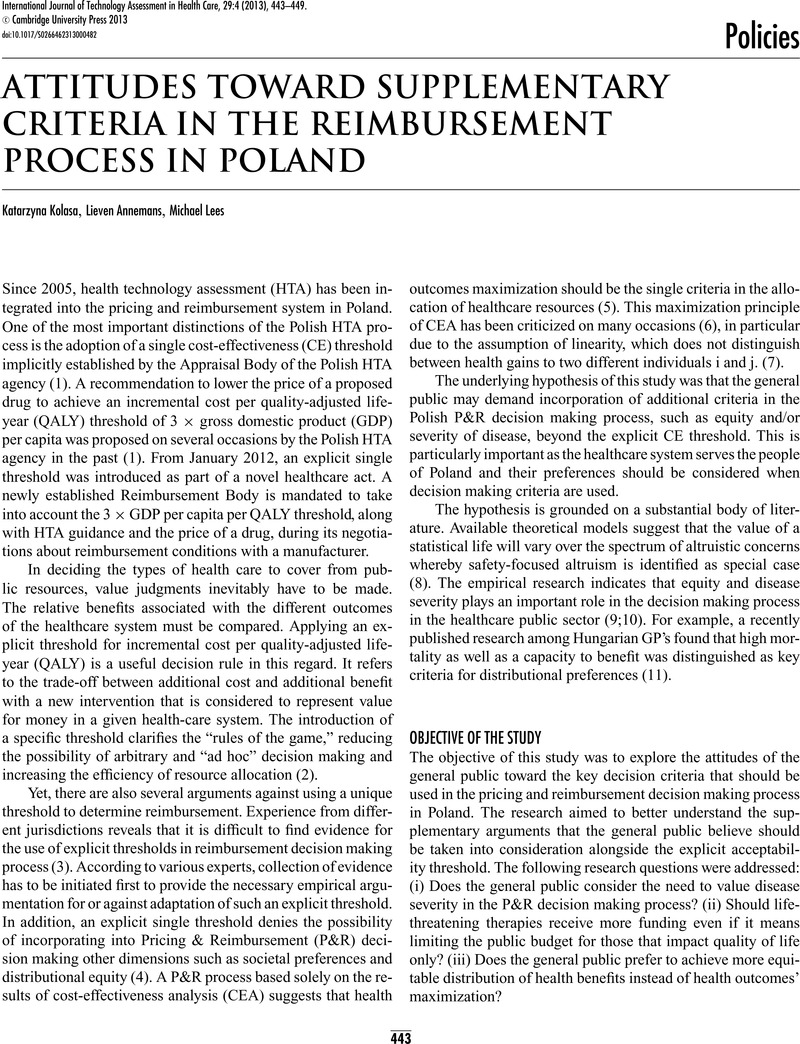Crossref Citations
This article has been cited by the following publications. This list is generated based on data provided by Crossref.
Kolasa, Katarzyna
2014.
Are pricing and reimbursement decision-making criteria aligned with public preferences regarding allocation principles in the Polish healthcare sector?.
Expert Review of Pharmacoeconomics & Outcomes Research,
Vol. 14,
Issue. 5,
p.
751.
Kolasa, Katarzyna
Dohnalik, Jacek
Borek, Ewa
Siemiątkowski, Marek
and
Ścibiorski, Cezary
2014.
The paradox of public participation in the healthcare in Poland – What citizens want, and what they think.
Health Policy,
Vol. 118,
Issue. 2,
p.
159.
Kolasa, Katarzyna
Kalo, Zoltan
and
Zah, Vladimir
2016.
The use of non-economic criteria in pricing and reimbursement decisions in Central and Eastern Europe: issues, trends and recommendations.
Expert Review of Pharmacoeconomics & Outcomes Research,
Vol. 16,
Issue. 4,
p.
483.
Kolasa, Katarzyna
Zwolinski, Krzysztof M.
Kalo, Zoltan
and
Hermanowski, Tomasz
2016.
Potential impact of the implementation of multiple-criteria decision analysis (MCDA) on the Polish pricing and reimbursement process of orphan drugs.
Orphanet Journal of Rare Diseases,
Vol. 11,
Issue. 1,



